Reading Time:
Pathology
Pathogenesis unknown – a migraine attack consist of a sequence of phases – prodromal, aura, headache and post-drome.
Classical migraine: Migraine with visual aura
Common migraine: Migraine without visual aura
Hemiplegic migraine: Sporadic or familial – associated with calcium/sodium
channel mutations
Aetiology
Mechanism of migraine remains unclear.
Possibly genetic as tends to be more common in patients with family history.
Triggers: food such as chocolate, cheese etc, exercise, menses, hunger, lack of sleep, stress, combined oral contraceptive pill
.Signs
Prodromal Phase: Nil
Aura Phase: Weakness, parasthesia and hemiparesis
Headache Phase: Photophobia, phonophobia
Symptoms
Prodromal Phase: Non specific symptoms such as difficult concentration, irritability, hunger, excessive yawning, tiredness
Aura phase: Visual symptoms such as scintillations, zigzag lines, scotomas; somatosensory symptoms such as parasthesia and dysphasia
Headache Phase: Unilateral throbbing or pulsating and nausea.
Investigations
Nil as clinical diagnosis
Consider brain imaging in atypical migraine or in the presence of red flags
Treatment
Acute: Aspirin, Paracetamol, NSAIDs, Anti-emetics, Triptans.
Prophylactic: Beta blockers, Pizotifen, Antiepileptic drugs such as Topiramate and
Sodium Valproate, Amitriptyline and Methysergide
Prognosis
Key Facts
Lorem ipsum dolor sit amet, sapien platea morbi dolor lacus nunc, nunc ullamcorper. Felis aliquet egestas vitae, nibh ante quis quis dolor sed mauris.
Key Images
Lorem ipsum dolor sit amet, sapien platea morbi dolor lacus nunc, nunc ullamcorper. Felis aliquet egestas vitae, nibh ante quis quis dolor sed mauris.
Key References
Lorem ipsum dolor sit amet, sapien platea morbi dolor lacus nunc, nunc ullamcorper. Felis aliquet egestas vitae, nibh ante quis quis dolor sed mauris.
